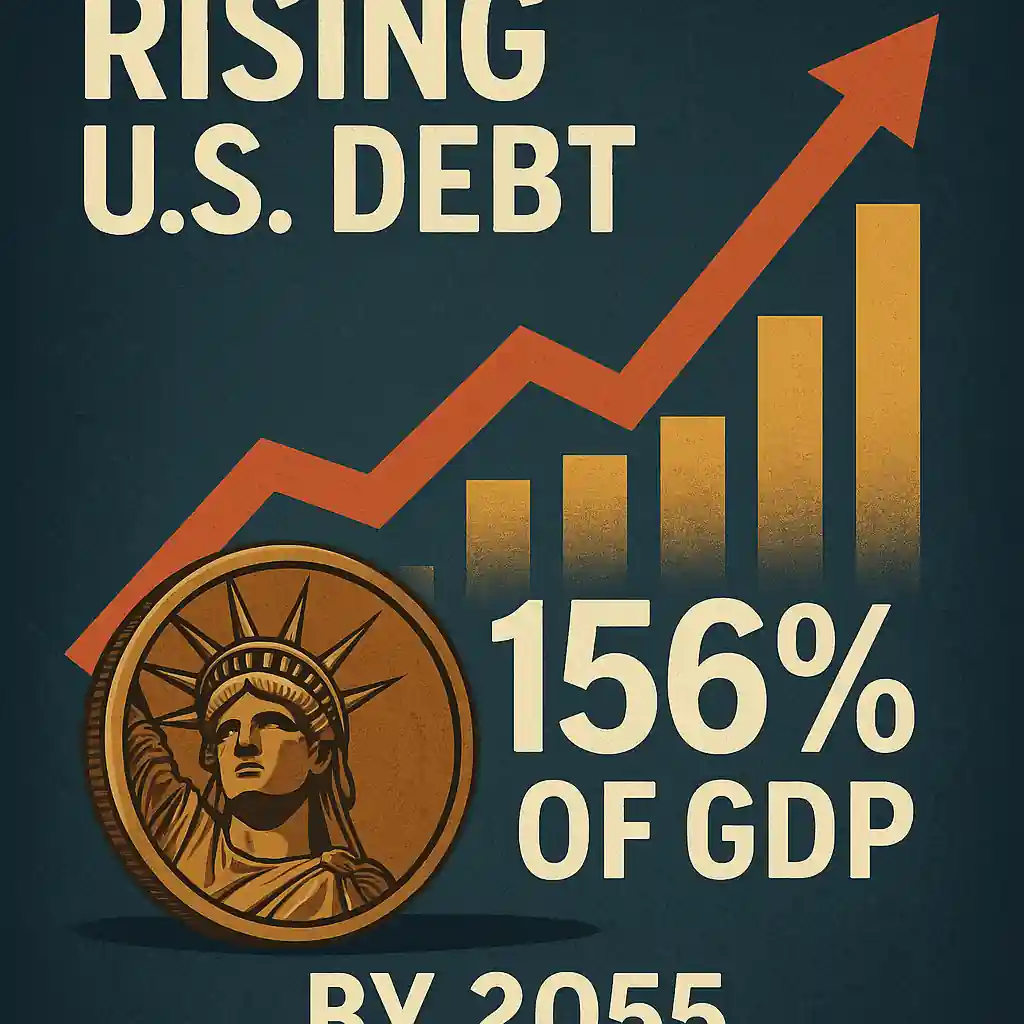CBO Projects Soaring Debt Levels by 2055
The Congressional Budget Office (CBO) has forecast a sharp increase in US debt, projecting that publicly held debt will rise to 156% of GDP by 2055.
This marks a slight improvement from the previous estimate of 166% by 2054 but still signals troubling long-term fiscal challenges.
Slower Growth Due to Low Birthrates and High Spending
The CBO attributes much of the rising debt to weak population growth and unchecked government spending.
Lower birthrates and aging demographics will drag on economic productivity, while fiscal policy remains heavily expansionary.
Immigration Emerges as a Growth Lifeline
According to the CBO, the US population will start to shrink by 2033 without continued immigration.
A shrinking labor force raises concerns about long-term economic vitality and the ability to manage increasing debt burdens.
Tax Cuts, Spending, and Political Gridlock
The CBO assumes that several expiring tax provisions—like parts of Trump’s 2017 tax cuts—will lapse.
However, the Trump administration and Republican lawmakers aim to extend or expand those tax cuts, raising questions about the path to managing the growing debt.
Treasury’s 3-3-3 Economic Plan
Treasury Secretary Scott Bessent has introduced a “3-3-3” plan:
- Reduce the deficit to 3% of GDP
- Boost GDP growth to 3%
- Increase oil production by 3 million barrels/day by 2028
Bessent has criticized the CBO’s methodology, calling its debt projections and economic scoring “crazy.”
Population Decline Poses Debt Repayment Risks
CBO analysts caution that falling population levels could make it harder to service national debt and sustain programs like Social Security.
A dwindling workforce means fewer payroll tax contributors, heightening pressure on government balance sheets.
A Shrinking Workforce and Growing Liabilities
As the US economy ages and its population growth slows, productivity gains alone may not offset the rising debt.
The outlook underscores the need for a sustainable fiscal path, especially as discretionary spending remains elevated.
A Call for Urgent Fiscal Reforms
The CBO’s report presents a sobering reality: high debt, slower growth, and demographic headwinds will shape America’s economic future.
Policymakers must weigh the long-term consequences of tax and spending decisions, with immigration, innovation, and energy policies playing a central role.




